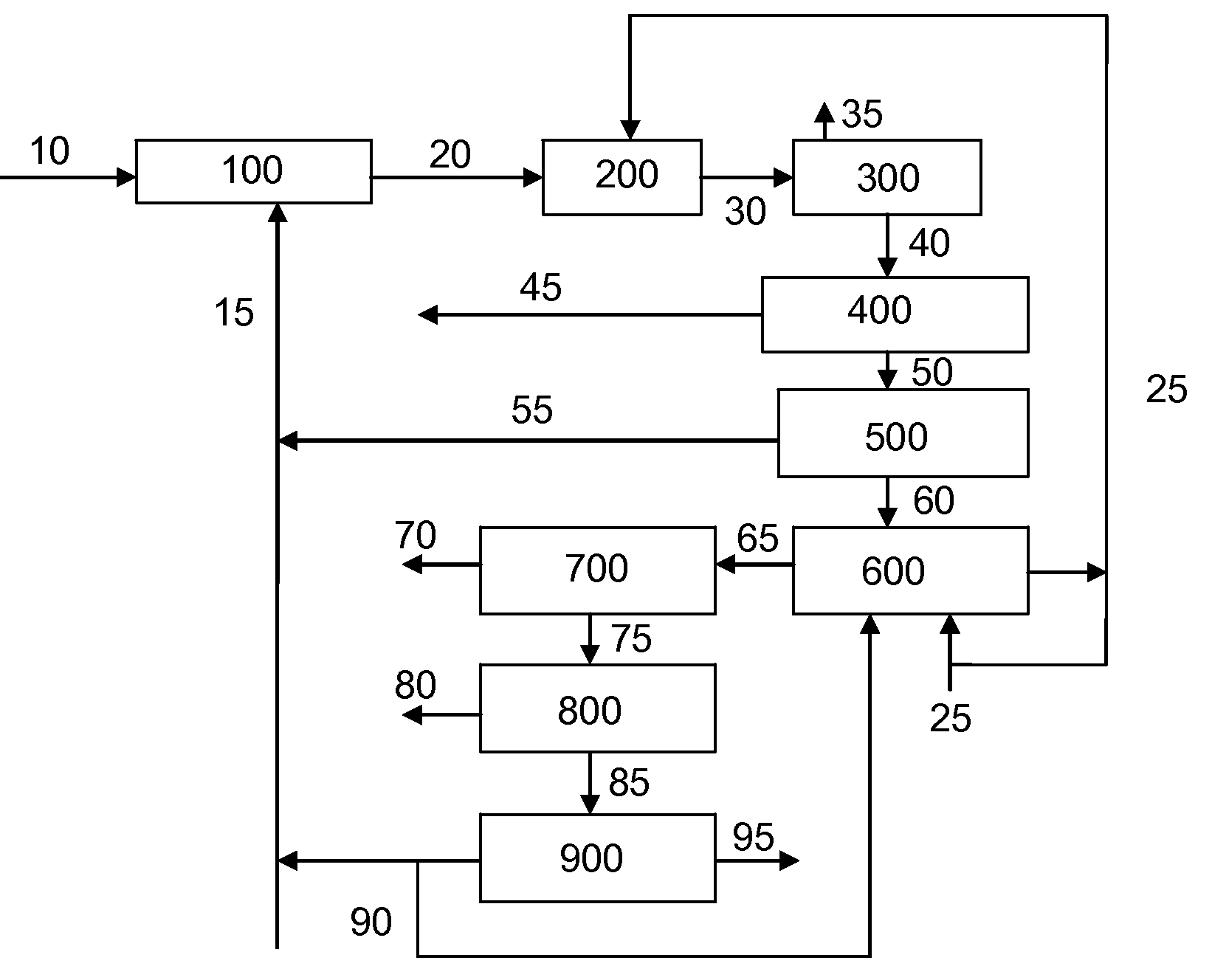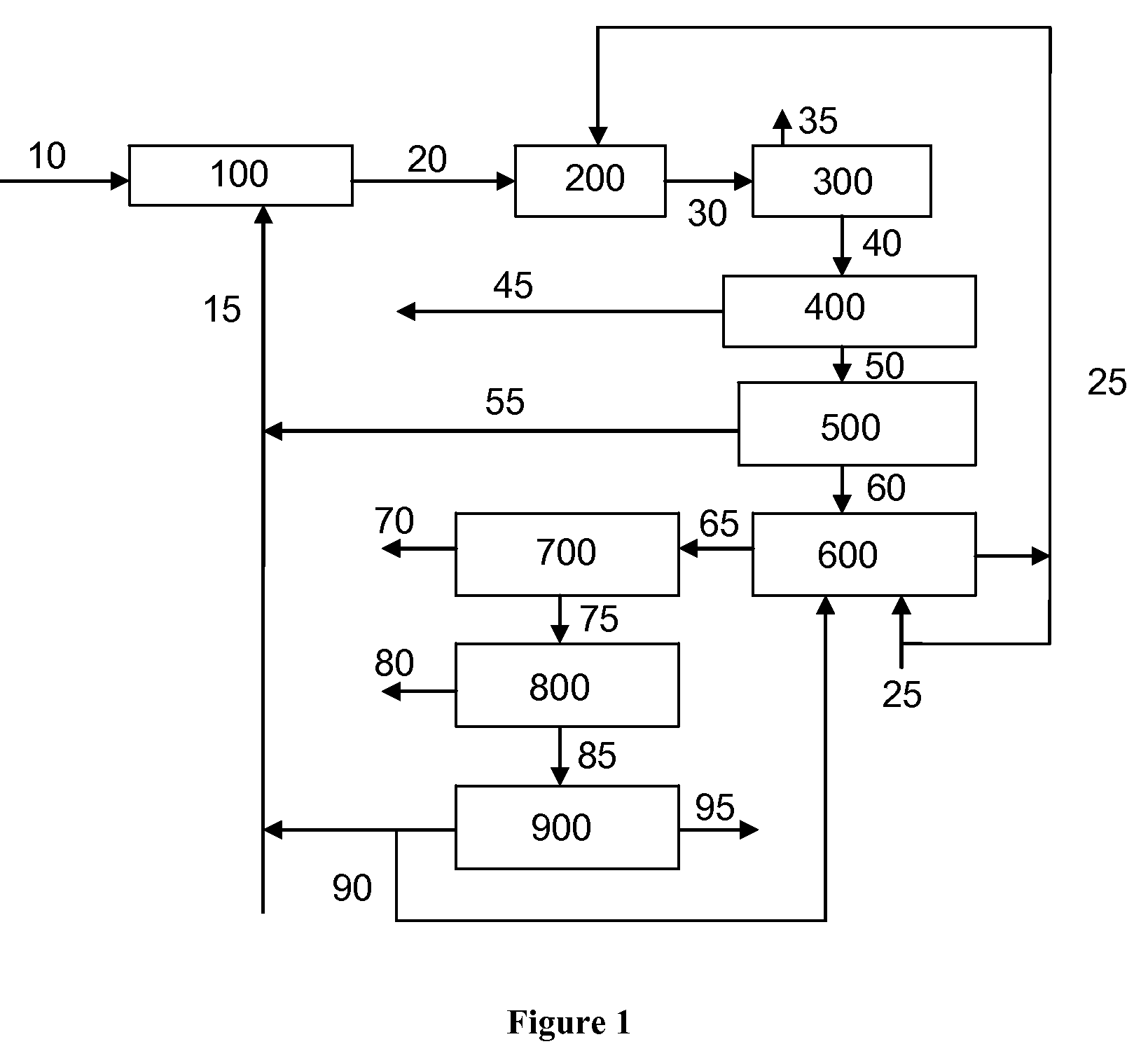Catalytic gasification process with recovery of alkali metal from char
a gasification process and alkali metal technology, applied in the direction of alkali metal oxide/hydroxide catalyst, metal/metal-oxide/metal-hydroxide catalyst, filter regeneration, etc., can solve the problems of substantially insoluble alkali metal compound in water and have little effect as gasification catalyst, so as to reduce the amount of makeup catalyst required
- Summary
- Abstract
- Description
- Claims
- Application Information
AI Technical Summary
Benefits of technology
Problems solved by technology
Method used
Image
Examples
example 1
Extraction of Soluble Potassium from High-KAlSiO4 Ash Sample
[0126]An agglomerate char material was provided having a composition especially concentrated in kaliophilite. By weight, the sample was approximately 90% ash (including soluble and insoluble potassium) and about 10% carbon. The material was ground to a particle size (Dp80) of 68.5 microns. The sample was subjected to water at 95° C. in a nitrogen atmosphere. The sample was filtered, thoroughly washed to remove substantially all of the water-soluble alkali metal compounds, and dried. Analysis of the resulting sample indicated that the amount of water-soluble potassium removed from the sample amounted to 40.08 wt % (dry basis) of the original sample.
example 2
Extraction of Insoluble Potassium from High-KAlSiO4 Ash Sample
[0127]The post-treatment sample from Example 1 was used. The hot-water-washed sample consisted of 78.20 wt % of ash and 8.99 wt % fixed carbon. Analysis of the ash portion determined that the ash contained 36.42 wt % of silica, 15.72 wt % of alumina, 18.48 wt% of insoluble potassium oxide, 12.56 wt % of calcium oxide, 9.13 wt % of ferric oxide, and trace quantities of other inorganic oxides. SEM data confirmed that most of the insoluble potassium oxide in the ash is tied up in KAlSiO4, primarily as kaliophilite and kalsilite.
[0128]To simulate the carbon dioxide hydrothermal leaching, the washed agglomerate sample was treated with water under elevated carbon dioxide pressures. The sample was held at 200° C. and treated for 3 hours. This acidic hydrothermal leaching simulation resulted in 51% extraction of the insoluble potassium from the ash sample. As a comparison, the same ash sample was treated according to the prior ar...
example 3
Extraction of Insoluble Potassium from Typical Char Sample
[0129]A char sample was provided from the gasification (87-89% carbon conversion) of Class B catalyzed Powder River Basin coal. The dry sample was determined to contain 34.4 wt % potassium. The char sample was crushed and added to water to form a slurry in a nitrogen atmosphere. The slurry sample was added to an autoclave with additional water and an amount of potassium carbonate to simulate a recycle wash solution. The solution was purged with nitrogen and heated for 30 minutes at 150° C. The autoclave was cooled to ambient temperature. The solid was filtered and washed three times with water. Thus, the soluble potassium was largely removed from the sample. The washed wet solid was placed back into the autoclave and was heated in the presence of carbon dioxide and water, and was heated to 200° C. for 3 hours. After cooling, the filtration and washing streams were analyzed. The total potassium extraction was 98.8%. Thus, for ...
PUM
| Property | Measurement | Unit |
|---|---|---|
| temperature | aaaaa | aaaaa |
| temperatures | aaaaa | aaaaa |
| temperatures | aaaaa | aaaaa |
Abstract
Description
Claims
Application Information
 Login to View More
Login to View More - R&D
- Intellectual Property
- Life Sciences
- Materials
- Tech Scout
- Unparalleled Data Quality
- Higher Quality Content
- 60% Fewer Hallucinations
Browse by: Latest US Patents, China's latest patents, Technical Efficacy Thesaurus, Application Domain, Technology Topic, Popular Technical Reports.
© 2025 PatSnap. All rights reserved.Legal|Privacy policy|Modern Slavery Act Transparency Statement|Sitemap|About US| Contact US: help@patsnap.com


